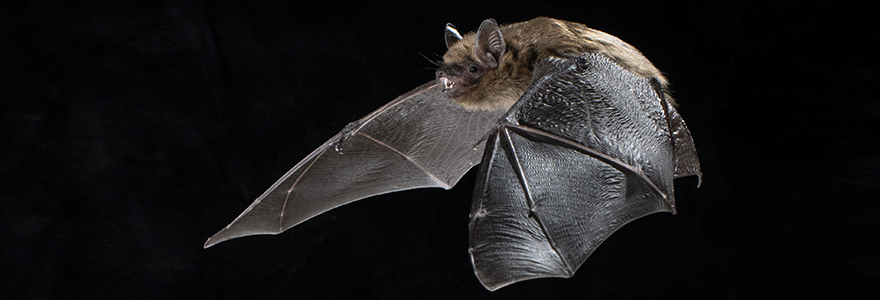Proactive Cornavirus Research in Bats
 |
| Photo by Tony Dejak/The Associated Press/ |
"The idea is that we will have a vaccine in the ready-to-go stage that could essentially just exist frozen, to be revived at any time, and to be rapidly produced in the event that it was needed for a new disease outbreak.""When you put all of these things together, there is reasonable likelihood of animal-to-human transmission of another coronavirus in the future. So, our project is aimed at preparing for this eventuality by generating vaccines for the diverse coronaviruses that are present in nature, particularly focusing on those from bats."“Imagine if we had something like this when the outbreak first occurred in Wuhan in December 2019. A vaccine could have potentially been rapidly deployed to that area before it spread widely and maybe could have headed this off before it became a pandemic."Ryan Troyer, virologist, department of Microbiology & Immunology, Schulich Medicine & Dentistry, Western University, London, Ontario
"Built up over many years of Royal Ontario Museum field work researching bats, we have amassed a comprehensive collection of tissue samples from different species and countries including bats from China.""Our tissues, initially frozen at -196°C, are turning into valuable resource for documenting viruses and helping us understand how to fight COVID-19 and new emerging diseases in the future."Burton Lim, assistant curator, mammalogy, Royal Ontario Museum, Toronto"While bats carry coronaviruses, none of the coronaviruses that cause human illness are present in bats in North America. Big brown bats, the most common species of bats in Canada, are not a competent reservoir for COVID-19, nor do they get sick from it.""There is more potential for humans to infect bats with COVID-19, which may have more serious consequences [because it could potentially] create a new reservoir for the pathogen that could then be cross-transmitted back to humans."Karen Vanderwolf, PhD student, Trent University

"Our goal is that when the next coronavirus emerges in the human population, we can do a quick screen of our bank to identify the specific vaccine that would have protective measures against the virus in the lab."Stephen Barr, PhD, Virologist, Western’s Schulich School of Medicine & Dentistry"It became obvious that such an extensive collection of frozen bat tissue could contribute directly to our COVID-19 project, and improve our knowledge of coronaviruses.""It presents a huge opportunity to share our knowledge of bats with a group of virologists working on coronavirus pandemics."Dr.Brock Fenton, bat biologist, Professor Emeritus. Western’s Faculty of Science, Research Associate at the ROM
In the past twenty years the world has seen the emergence of three coronavirus epidemics striking humans. SARS in 2003, MERS in 2012, and currently SARS-CoV-2. the virus that has caused the COVID-19 global pandemic. Coronaviruses are not uncommon in nature. The three coronaviruses that crossed the species barrier from animal to human appear to have been related to transmission from bats. Research is ongoing to firmly validate that hypothesis on the evidence garnered to date and the research at Western appears to confirm it.
 |
| A sleeping horseshoe bat hibernating in this file photo |
In the meantime, while the current pandemic is raging globally, scientists at Western University in London, Ontario, in collaboration with biologists from the Royal Ontario Museum in Toronto are studying thousands of frozen bat tissue samples and bat droppings that have been amassed at the ROM for the ultimate purpose of developing a store of ready-made vaccines that can conceivably be used in the future as other coronaviruses enter the picture to cause newer global pandemic situations -- for the obvious purpose of better preparing humanity to swiftly and successfully respond to such conceivable future emergencies.
The hunt is on therefore to isolate novel coronaviruses endemic to bats with the potential for animal-to-human transmission in the future. The purpose, to isolate the unique spike genes inherent in these viruses, that would ideally result in forming the backbone of ready-made vaccines to be brought out and tailored to any new emerging viruses in the future when outbreaks occur. The bat samples inventory at the ROM are indispensable to the research being undertaken to obtain a better understanding of the virus diversity.
The ability to produce those spikes on various coronaviruses is the object of the research since the spike protein in a virus represents the membrane protein responsible for enabling entry for the virus into human cells. Binding to receptors on target cells, the proteins' study can aid in determining which species of bat harbour the coronavirus version capable of spreading and causing infections. Access by the university team to the wealth of bat samples simplifies their onerous identification tasks.
Close to 15,000 bat specimens representing multiple species from thirty countries are available at the museum. The ROM constructed a Bat Cave well before having to close down during the current epidemic, that became very popular with the visiting public as a re-creation of the St.Clair Cave in Jamaica. The display, based on ROM fieldwork, teaches children how bats make use of echolocation, featuring 800 models and over twenty bat species.
So far, the researchers have found that the version of the coronavirus implicated in making humanity ill has no presence in North American bats. The risk, however, awaits evaluation. Of the 18 bat species native to Canada that live anywhere they can find suitable habitation to provide protection from predators -- including owls, hawks, falcons, snakes and raccoons -- among which are buildings, tree hollows, the underside of bridges, or caves, none have proven to be virus vectors of a type constituting a threat to humanity.
 |
| A brown bat can be seen in this image. (W5) |
Labels: Animal-to-Human Transmission, Bat Vectors, Novel Coronavirus, Research, Vaccines, Western University

0 Comments:
Post a Comment
<< Home